Golden Week is set to officially begin on October 1! If you’re looking to escape the city for a little well-deserved R&R, then this guide to nearby holiday getaways is for you.
1. Hainan, the Hawaii of China
Image via Unsplash
Only an hour and a half flight from Shenzhen is a beachy escape in Hainan province. October is one of the recommended times to visit as the temperature and humidity drops from the sweltering heat of the summer. If you enjoy the resort lifestyle, Sanya has top-tier hotels lining the coast which come equipped with multiple pools, manicured lawns and private beaches. Travel inland for a couple hours and you can experience boutique hot spring lodges near Wuzhishan.
How to get there:
Fly to either Haikou Meilan International Airport or Sanya Phoenix International Airport, both which take around an hour and a half. Haikou is the capital of Hainan, located north of the island, while Sanya Airport will be closer to most resorts and beaches in the south.
Recommended accommodation:
The Sanya Edition, located in Haitang district is perfect for those looking for a luxury resort experience by the beach. For a forest getaway, the Narada Resort & Spa provides a tranquil nature experience. Rooms are equipped with their own private outdoor hot spring tub.
2. Kaiping Diaolou and Villages

Image by That’s
Located west of Shenzhen, the Kaiping Diaolou and Villages are presently the only UNESCO World Heritage Site in Guangdong Province.
The diaolou – fortified, multi-story residences made of concrete – came into being as a remedy to several societal ills. Kaiping was in times past the victim of floods, rampant banditry and the devastating Punti-Hakka Clan Wars (an enduring conflict occurring at the end of Qing Dynasty between the Cantonese-speaking natives and the migrant Hakka people that resulted in hundreds of thousands of deaths).
Combating these issues, diaolou served as watchtowers, shelters from flood and blockhouses against raiders.
The diaolou are one-of-a-kind structures, dispersed among paddy fields and flaunting a melange of Chinese, Western and, in some cases, Islamic architecture. From their exteriors you can detect Roman domes, Greek porticos and Gothic windows, while most of the interior design retains southern Chinese flair.
As scattered as they are, there are four major clusters of watchtowers: Zili, Jinjiangli, Sanmenli and Jianglong.
How to get there:
Take a two- to three-hour bus from Shajing Center Coach Terminal, Xixiang Coach Terminal, Bao’an Bus Terminal or the Qiaoshe Terminal in Luohu Station to Kaiping (RMB80-90), then take a taxi (RMB50) or local bus to one of the diaolou clusters (remember to tell the bus driver your destination). Tickets to the villages range from RMB50-80.
Recommended accommodation:
Diaomin Buluo Boutique Guesthouse (碉民部落精品民宿) is a newly opened branch of Diaomin Buluo Inn, a popular hostel situated along the river’s edge in 400-year-old Chikan town, which is currently under renovation. The boutique guesthouse, located about 2 kilometers from Zili village, is a highly recommended accommodation for budget travelers. There is a total of 14 rooms catering to solo travelers, couples and families. The guesthouse also boasts a small cafe and bar, which serves basic Western meals (with a typical Chinese twist) and booze. For reservations, call 0750-261 6229.
3. Dapeng Fortress
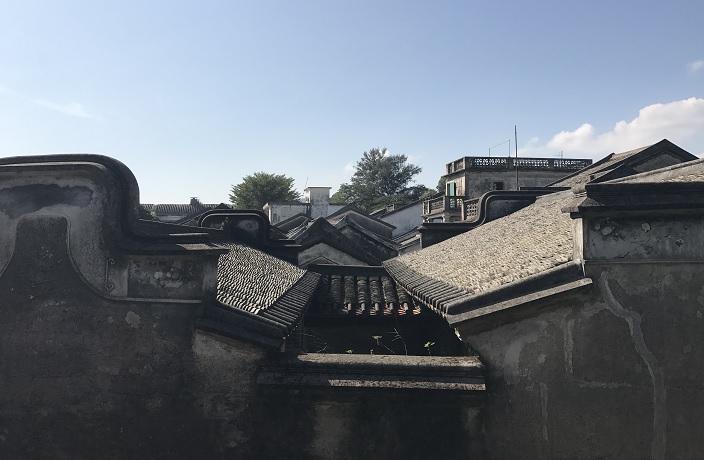
Image by That’s
As you approach the fortress you are greeted by a panorama of blue sea and green mountains before finally reaching the fortress’ main gate.
With a history of more than 600 years, one can imagine soldiers entering through the stone-arch entranceway – or famously keeping it shut during a 40-day onslaught by Japanese pirates in 1571.
Instead of garrisoned troops and supply stockpiles, we find a walled-in hamlet that has developed commercially, with alleyways of coffee shops, hostels and restaurants nestled beneath Ming and Qing Dynasty era tiled roofs.
Before noon, the streets are preternaturally quiet. Hearing your own footsteps is a bizarre feeling for anyone who has adjusted to the constant din of the big city, and the near silence lasts until midday, when the first businesses lazily begin opening.
While the genetic heritage may be lost, culinary traditions remain. A trip down a side street leads to an ancient fortress wall, where current residents hang homemade sausages in the sun. Another local specialty: tube-shaped rice dumplings known for their heavy packing of meat.
How to get there:
Take bus E26 which leaves from Lianhe Square and will bring you to central Dapeng New Area. From there, bus B753 runs every 30-60 minutes to the Dapeng Fortress gate (Gucheng Xiaoqu Stop 古城小区). The total trip should cost about RMB16.
Recommended accommodation:
Shenzhen Little Dimple Inn is about as cute as it sounds, with tastefully decorated, spacious rooms. It’s located close to the coast in the fashionable part of Dapeng New District, also less than 10 minutes’ walk away from the fortress. Get a room with a terrace if possible to enjoy the views.
4. Shaoshan, the Childhood Abode of Mao Zedong

Image by That’s
For anybody interested in Mao and the history of communism in China, a visit to old Shaoshan is informative and eye-opening – not least because it provides a window into how the PRC wants people to perceive its founder.
Old Shaoshan is a pretty little hamlet with Mao’s childhood home at its heart. This bungalow, made from earth and wood, is easily identified by the long queue of people stretching back from its doors, waiting patiently to trudge through the bare rooms that once enclosed the communist hero.
Millions flock here every year to see where the Great Helmsman spent his early life. Most of these visitors are Chinese, though the surprisingly accurate English, French and Russian translations that greet visitors at the vehicle drop-off point attest to the government initiatives afoot to encourage foreign travelers.
If you stay the evening, you can also get tickets to a grand production that celebrates Mao’s life several times an evening, or visit a local restaurant to gorge on Mao’s favorite food: hongshao rou (braised pork in sauce).
How to get there:
High-speed trains go from Shenzhen North to Shaoshan South Station. From there, tell anybody you see that you want to go to 毛泽东同志纪念馆 (Mao Zedong Tongzhi Jinian Guan) and they will direct you to the correct local bus or shuttle.
Recommended accommodation:
Ideally located within walking distance of Mao Zedong’s former home and Statue Square, the Hualong Hotel Shaoshan offers comfortable, clean rooms at prices that generally fall below RMB500 (although that may not be the case during holidays). The hotel is a good option for a weekend getaway due to its close proximity to tourist sites and scenic areas, as well ‘downtown’ Shaoshan and the train station.
5. Huizhou’s Lakes
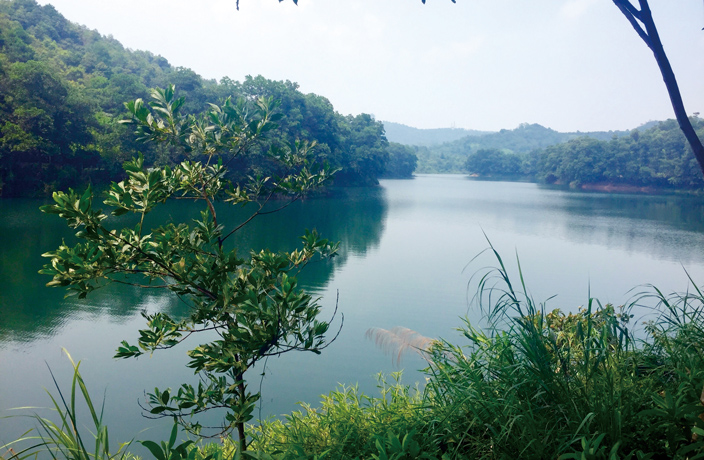
Image by That’s
Equally well served by transport links from Guangzhou and Shenzhen, Huizhou is a much sleepier city than its larger Guangdong brethren. Not unpopular with domestic tourists, Huizhou lays claim to several leisure activities: a sandy bay, a holy mountain, hot springs.
It also possesses a pair of scenic lakes. When the sun is shining, the verdurous vegetation seems to blaze, and even in cloudy weather it’s a pleasant antidote to metropolitan malaise.
Entering the main gate at Xi Hu, or West Lake, a topiary dragon watches over ponds overflowing with lotuses. If the bridges and paths across the lake are not unique, at least they are aesthetically conceived, blending well with the scenery. The best way to escape weekend or holiday crowds is to hire a pedalo or a motor boat and head out onto the water. If the season is right, you may be treated to the sight of birds nesting on some of the small islands.
Honghua Hu is less frequented. Many come here to enjoy the serene, 18-kilometer cycle along a well-maintained road that winds through verdant greenery. Indeed, this activity is linked so closely with Honghua that numerous bike shops at the foot of the hill leading to the entrance rent velocipedes; more are available in the park itself at the beginning of the trail.
West Lake and Red Flower Lake, as they are known in English, are within a short drive (or brisk walk) of one another. Both can easily be explored in a single day, and each offers a different type of adventure.
How to get there:
From Shenzhen, buses at the Nanshan, Futian and Luohu coach stations all go to the more central Huizhou terminal for RMB53-55.
Recommended accommodation:
This being Huizhou, travelers can choose from more upscale options without breaking the bank. The Huizhou Garden Business Hotel (惠州景园商务酒店) boasts a beautiful glass-walled lobby as well as spacious, tastefully-decorated rooms. With the Red Flower Lake under 3 kilometers away, it also makes for a convenient base for your travels.
6. Shaoguan’s Danxia Mountains
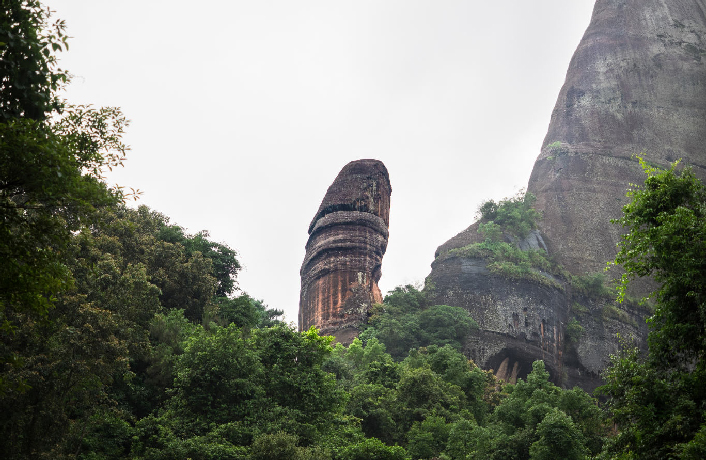
Image by Tristan Zhang/That’s
Situated in the northern Guangdong city of Shaoguan, this beguiling range of karst-like mountains boasts steep cliffs, lush trails and fresh, clean air. The stunning splendor of this red-tinged hikers’ paradise is so unique in Guangdong that it constitutes the sole UNESCO Natural Heritage Site in the southern province.
Though popular with visitors year-round, its massive size and numerous trails mean it’s rarely overwhelmed by crowds.
Upon arriving at the gate of the scenic area, you’ll likely be approached by scalpers offering discounted tickets for entry. Full-price tickets sell for RMB150 at the ticket office and grant you passage to both of the geopark’s main scenic areas.
En route to the peak, hikers pass through a Buddhist temple, calligraphic inscriptions etched into massive, multicolored cliffs and can detour to visit a historic Taoist shrine. On your descent, be sure to stop off at the famed Yinyuan Stone, a natural rock formation that bears a striking resemblance to an enormous human vulva.
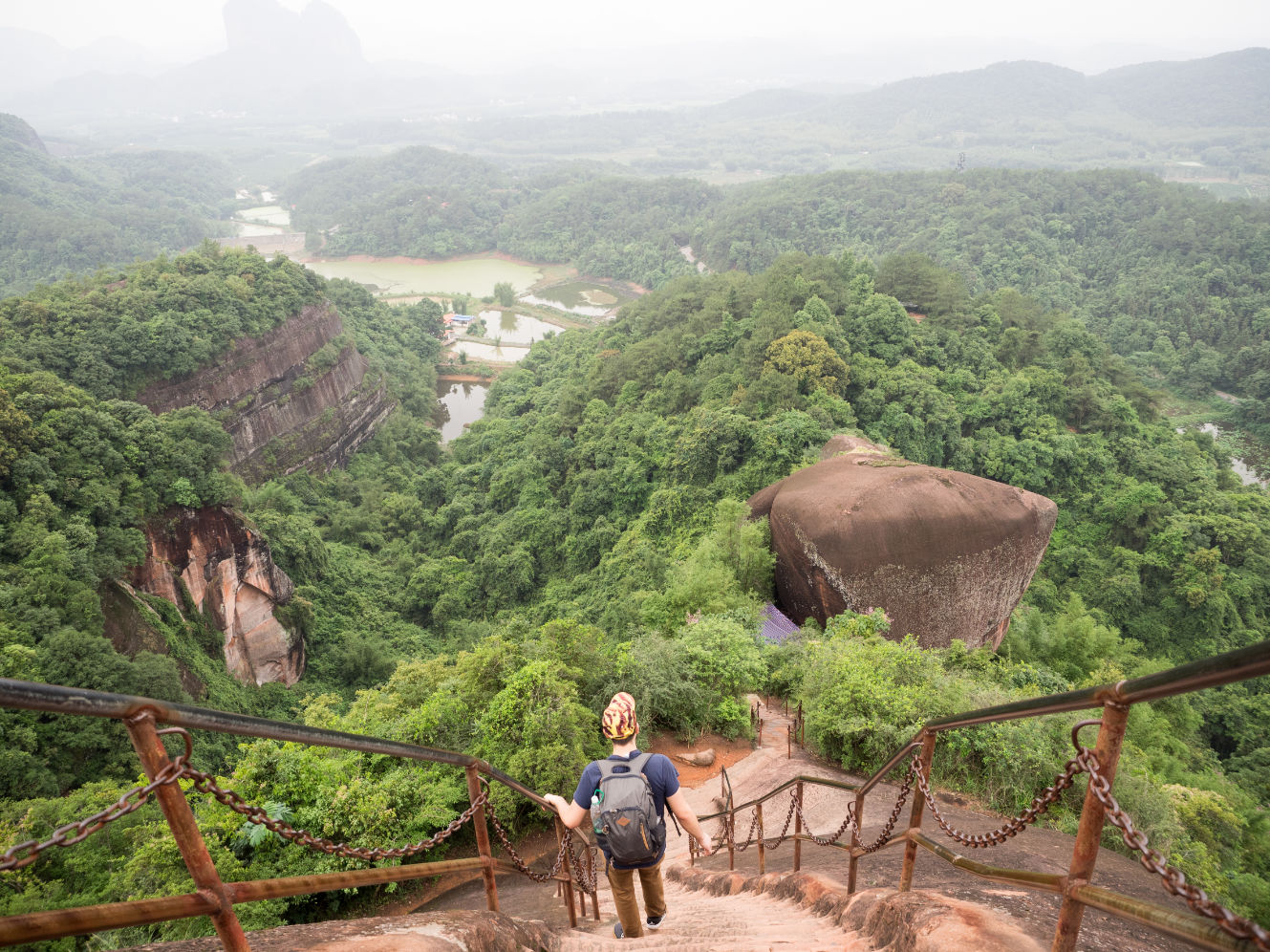
Image by Tristan Zhang/That's
Cross a narrow valley on foot or by complimentary bus ride towards the neighboring Yangyuan Stone Scenic Area. The elegant Jin River, which can be toured by boat, winds its way between the two and a tightly clustered village bristles with simple restaurants serving delicious home-style Hakka fare.
The main draw here is the Yangyuan Stone, a soaring column of phallic rock bearing an indisputable likeness to an erect penis. Ximei Fortress crowns the peak: a crumbling Ming Dynasty redoubt built by a despotic feudal tyrant from a nearby village that serves as an ideal place to admire a rosy sunset and enjoy a well-earned rest.
How to get there:
Take a fast train at Futian Station (RMB186) or Shenzhen North Railway Station (RMB179) to Shaoguan Railway Station in less than two hours. From there, take a shuttle bus (RMB21) to Danxiashan (丹霞山).
Recommended accommodation:
Forget hotels, this natural landscape demands camping! Rough it for a night or two by pitching a tent in the renowned scenic area. Alternatively, there’re plenty of guesthouses in the scenic area.
7. Zhuhai’s Miaowan Island
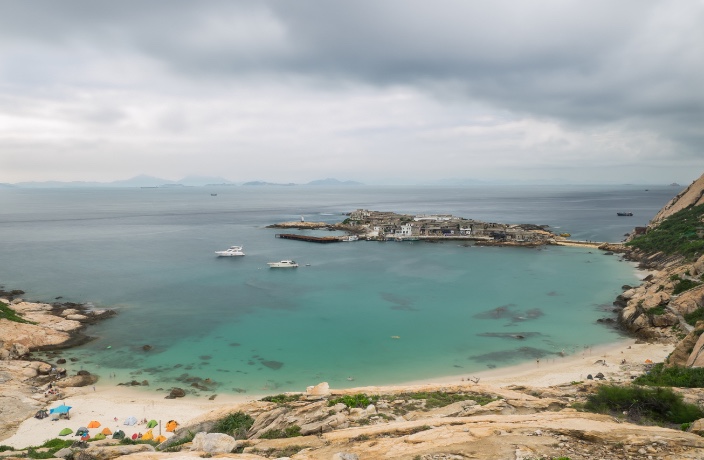
Image by Tristan Zhang/That's
Resting to the southeast of Macau, and about 25 nautical miles from Hong Kong, Miaowan Island is a small plot of land in the South China Sea that is renowned for its pristine beaches and azure water. Under the administrative control of Zhuhai (a city rightly known as the ‘city with a hundred islands’), the island has attracted mainlanders over the past decade looking to escape the craziness of urban life for a secluded retreat. Deserved or not, Miaowan’s plentiful natural resources have earned it the moniker ‘China’s Maldives.’
There to capitalize on the island’s marine goodies is a small population of Cantonese-speaking fisherman (roughly two dozen households). Small businesses are run by the local population in Maiowan Village, which sits on a rock outcrop that is connected to the main island via a concrete bridge. Amid the barking of dogs and the whistle of seagulls, villagers set up their metal-mesh fish traps, using a mixture of bread, shrimp and fish, on the quay.
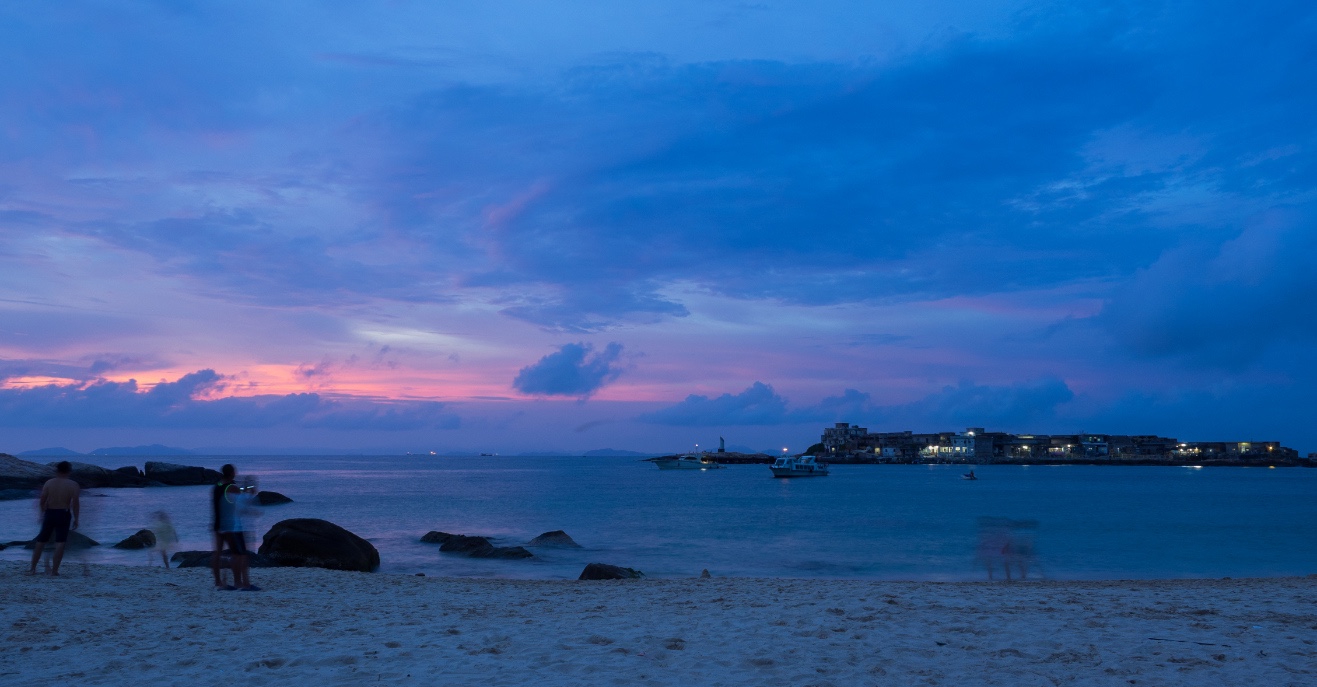
Image by Tristan Zhang/That’s
Fishing is allowed on Miaowan Island and the coral reefs off the coast are home to an array of tropical fish species. If you don’t have cooking equipment to cook your catch, restaurants run by hospitable islanders will prepare your seafood for a reasonable price.
Scuba diving courses are available and are run by a licensed dive instructor who moonlights as a server at a local restaurant.
Paying RMB100-200 for a meal at one of the island’s eateries may seem steep, but it’s worth noting that some of South China’s freshest and cleanest seafood is served here – and it’s well worth a sample.
How to get there:
Ferries to Dongao Island, a transfer point en route to Miaowan, are available at Shekou Port in Shenzhen. From there you’ll transfer to a speed boat for the remaining leg of the journey to Miaowan.
*Book a two-day trip through a private agent (about RMB500) to Miaowan Island in advance on zh-piao.com (0756-860 9991).
Recommended accommodation:
Camping on the beach! In addition to food, restaurants on the island also rent out tents at RMB150 per night. Hostels with air con-equipped rooms range from RMB200-300, though electricity is only generated at night and a cool, fresh water shower will cost you an additional RMB10.
8. Mount Luofu in Huizhou
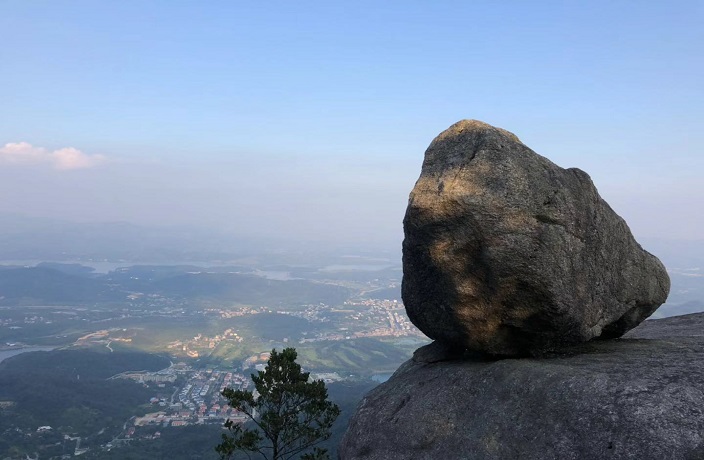
Image by Jonathan Zhong/That’s
Mount Luofu, located in the northwestern part of Huizhou’s Boluo county, dwarfs the Pearl River Delta region’s other famous peaks. With an elevation of 1,296 meters, Mount Luofu’s crown is 869 meters higher than the top of Baiyun Mountain in Guangzhou, and 950 meters higher than Mount Xiqiao in Foshan. In addition to dizzying heights, the scenic area Mount Luofu is set within claims 980 waterfalls and another 430 peaks.
While you can utilize a shuttle bus service or cable cars to travel part of the way up Mount Luofu (approximately 600 meters above sea level), the journey to the summit is one that must ultimately be traversed on foot.
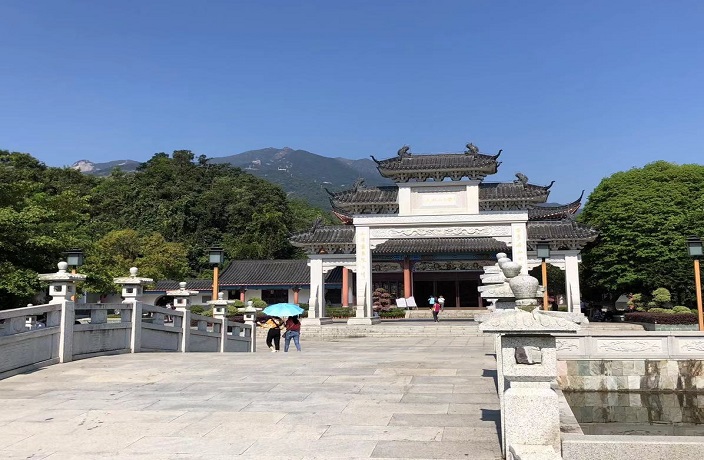
Image by Jonathan Zhong/That’s
The scenery on the lower portion of the mountain has little to write home about, but the upper half of 1,296-meter peak offers intrepid visitors phenomenal views and some unique rock formations to gawk at. It takes around five hours to walk to the top of the mountain, but it’s worth it. If you find yourself exhausted on the walk down, opt for the shuttle service or cable car to shorten the return journey.
To get the most out of your visit to Mount Luofu National Scenic Area, be sure to arrive early in the morning (8 or 9am) so that you’ll have plenty of time to wander the park and climb the mountain before the last cable car leaves at 5.30pm. We also strongly recommend bringing cash with you for this adventure, as phone reception in the park is nonexistent.
How to get there:
Take the train from Shenzhen Railway Station (RMB18.5/hard seat) or Shenzhen East Railway Station to Huizhou Railway Station (RMB16.5/hard seat). From there, take a cab or bus (208, 209, 5, or 11) to Huizhou Coach Terminal, where you can catch a shuttle bus to the scenic area.
Recommended accommodation:
Once a mountain retreat that accommodated military officials, Luofu Mountain Yulan Hotel is a lakeside establishment in the scenic area, with classy decor and high-standard facilities. It boasts nine orange jessamine trees, which blossom from June to September and fill the air on the premises with fragrance.
9. Weizhou Island in Guangxi
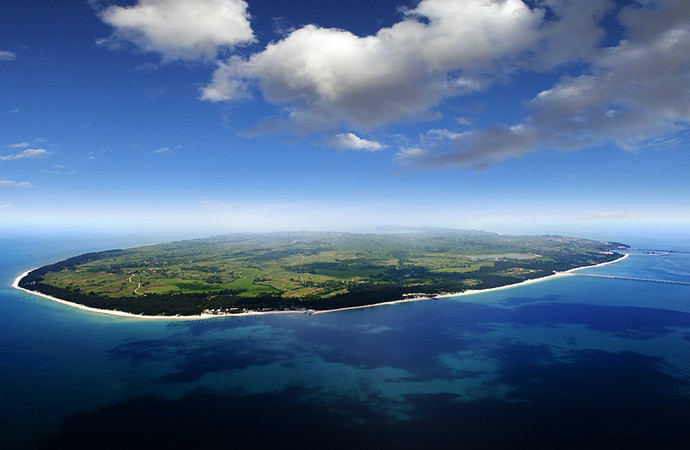
Image via Mafengwo
To the south of Beihai and east of Vietnam lies the volcanic island of Weizhou. Reputedly the youngest island of its type in China, it boasts a unique volcanic landscape and is home to a diverse collection of bird species. On the island you can visit Eryushan National Geopark, which showcases a beautiful array of volcanic rock, coral and sea creatures, among other exhibits.
Another popular spot, for both amateur and professional photographers alike, is ‘five color’ beach, which beckons tourists with its aesthetically pleasing rock formations that hug the shoreline. On the west of the island, visitors can catch one of China’s most sublime sunsets. Before leaving, be sure to pay a visit to one of Weizhou’s historic landmarks: Shengtang Catholic Church, which was built by French worshippers in the mid-1800s.
If you don’t like seafood, Weizhou probably isn’t your dream destination. Here, seafood items, most notably sea cucumbers and giant prawns, are available throughout the year and are a mainstay at restaurants and hotels across the island.
To get in on the action, we recommend checking out the South Bay seafood market, where you can peruse the daily catch and purchase fish or crustaceans to cook up yourself. Prices vary, and are dependent on the ‘rarity’ of the aquatic item that catches your eye.
If cooking while on vacation isn’t your thing, cheap seafood barbecue joints can be found after dark near the seafood market, or at Shiluokou.
How to get there:
Take a fast train from Shenzhen North Railway Station to Nanning East Station (RMB243, second class; RMB368, first class). From there, transfer to Beihai Station (RMB52, second class; RMB82, first class). Riding the ferry to the island costs between RMB120-180, while entrance tickets are priced at RMB110.
Recommended accommodation:
For those looking to fully embrace the island vibes, we recommend setting up shop at one of the island’s few hostels. Otherwise, chill out on the mainland at Beihai Aegean Sea Resort Hotel. As with elsewhere in China, be sure that you book in advance if you’re planning on coming during the holidays, as the island is a popular tourist destination during the high season.
10. Yangjiang
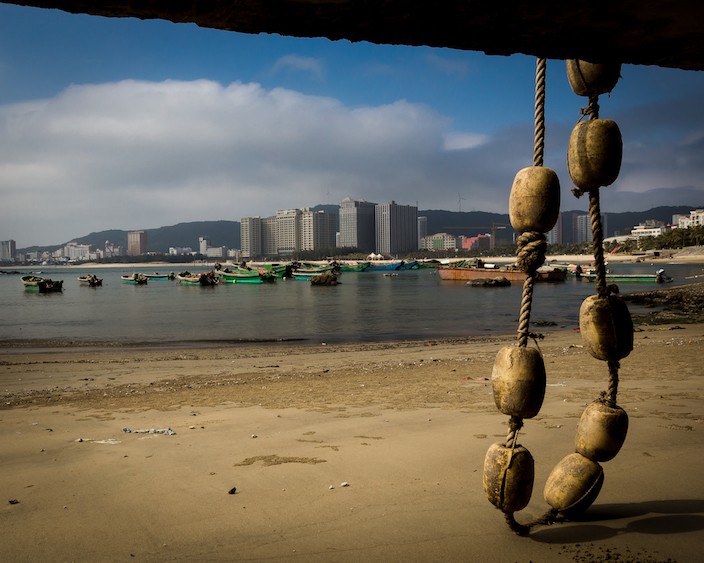
Image via Andy Barraclough
Like most small cities in China, Yangjiang is a place of stark contrasts. Located in southwestern Guangdong, the prefecture-level city is steeped in old culture, with a large, aging population and a number of urban farms and urban villages. In the vicinity of these older structures are new, scaffolded buildings climbing upwards at a fast pace.
On Yangjiang’s Hailing Island, this bipolar state of existence is also noticeable: while stunningly beautiful, the island’s raging tourism industry and numerous fishing businesses also render it tragically dirty.
While the city is at points beset by litter, it also has its moments of scenic serenity, given its geographical location on the long diagonal coastline that stretches from Guangzhou down to Zhanjiang.
Most tourists visit two distinct areas of the city: Yangjiang’s urban area, where the city’s high-speed railway is located, and Hailing Island, the region’s main attraction, which is located to the southwest of the city.
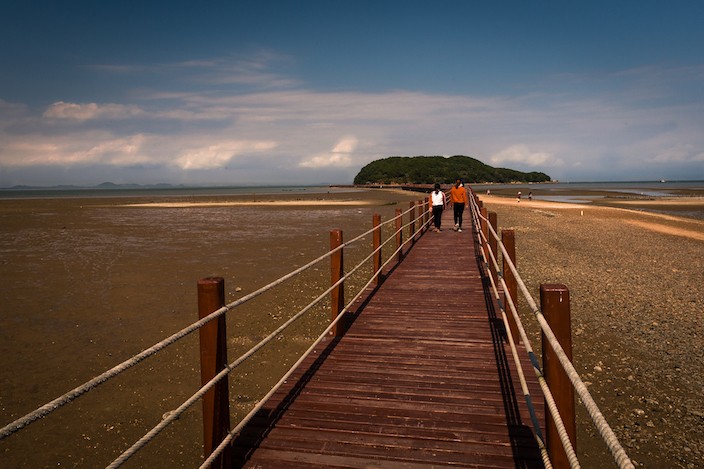
Image via Andy Barraclough
One of the more redeeming features of Yangjiang are the city’s beautiful waterways, with a network of rivers winding through the city to Beijin Harbor. When visiting the area, take the opportunity to learn about the local economy by visiting the National Maritime Silk Road Museum on Hailing Island. From the museum, you can easily reach Mawei Island, where you can gaze out over the ocean and gape at the plethora of fishing boats that dot the water’s surface.
On the western tip of Hailing Island, ATV rentals are available and visitors can race up and down the beach. On our visit, the cost of an ATV rental was set at RMB100 for 30 minutes. If you are more attuned to water sports, hitch a ride on a jet ski with a local driver for RMB150 per three turns around the small bay.
As a coastal city, Yangjiang is famed for its piscatorial delights. Crabs, shrimp, crawfish and many other aquatic treats are available at the numerous outdoor barbecues and seafood restaurants along the coast. We tried out Huayang Yucun near Mawei Island and were delighted by their spicy hairy crab, which cost just RMB48 per pound.
How to get there:
High-speed trains go daily from both Guangzhou South Railway Station and Shenzhen North Railway Station.
Recommended accommodation:
There is an abundance of cheap, Chinese-style hotels that dot the area and, while nothing special, they do the job. We recommend staying on Hailing Island, but be sure to call ahead to check that your hotel of choice accepts foreigners. And, like everywhere else in China, make sure that you book in advance if you're planning on coming during the holidays, as the city is a popular tourist destination during the high season.
With files from Ziyi Yuan, Tristin Zhang, Tom Lee, Winnie Jin, Jonathan Zhong, Bryan Grogan
This article was originally published in August 2017. It has been updated and republished on September 28, 2020.
[Cover image by That’s]
For more local travel ideas, check out our Daytripper series.
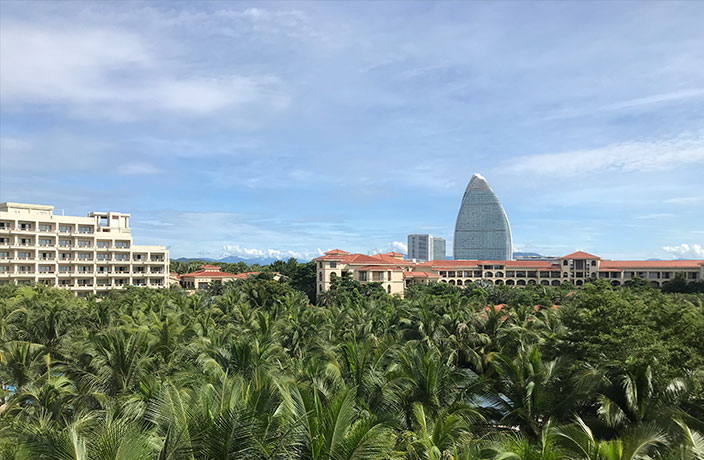




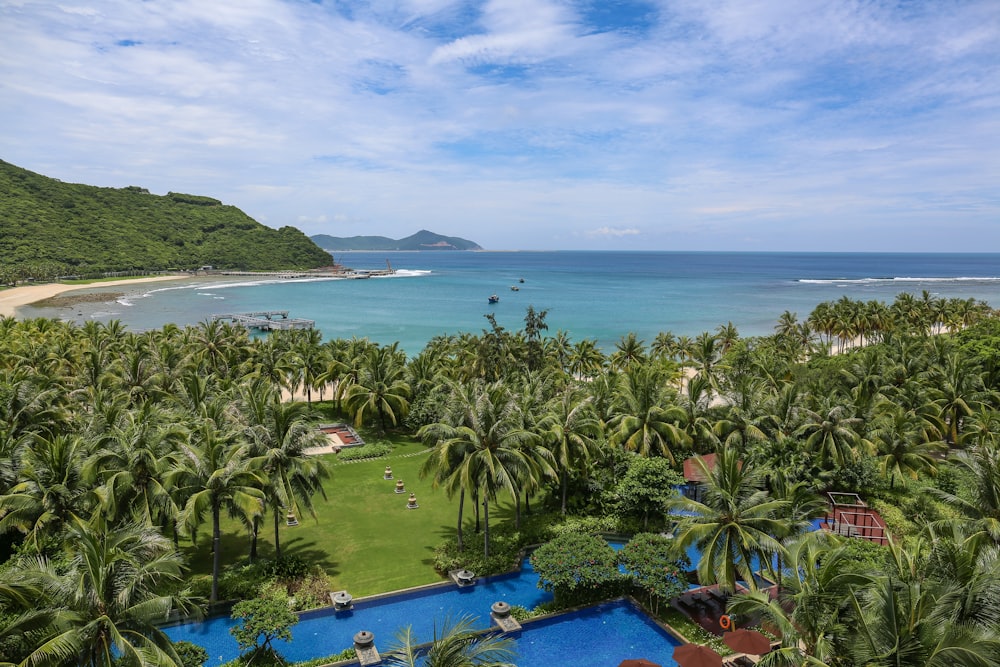

















0 User Comments